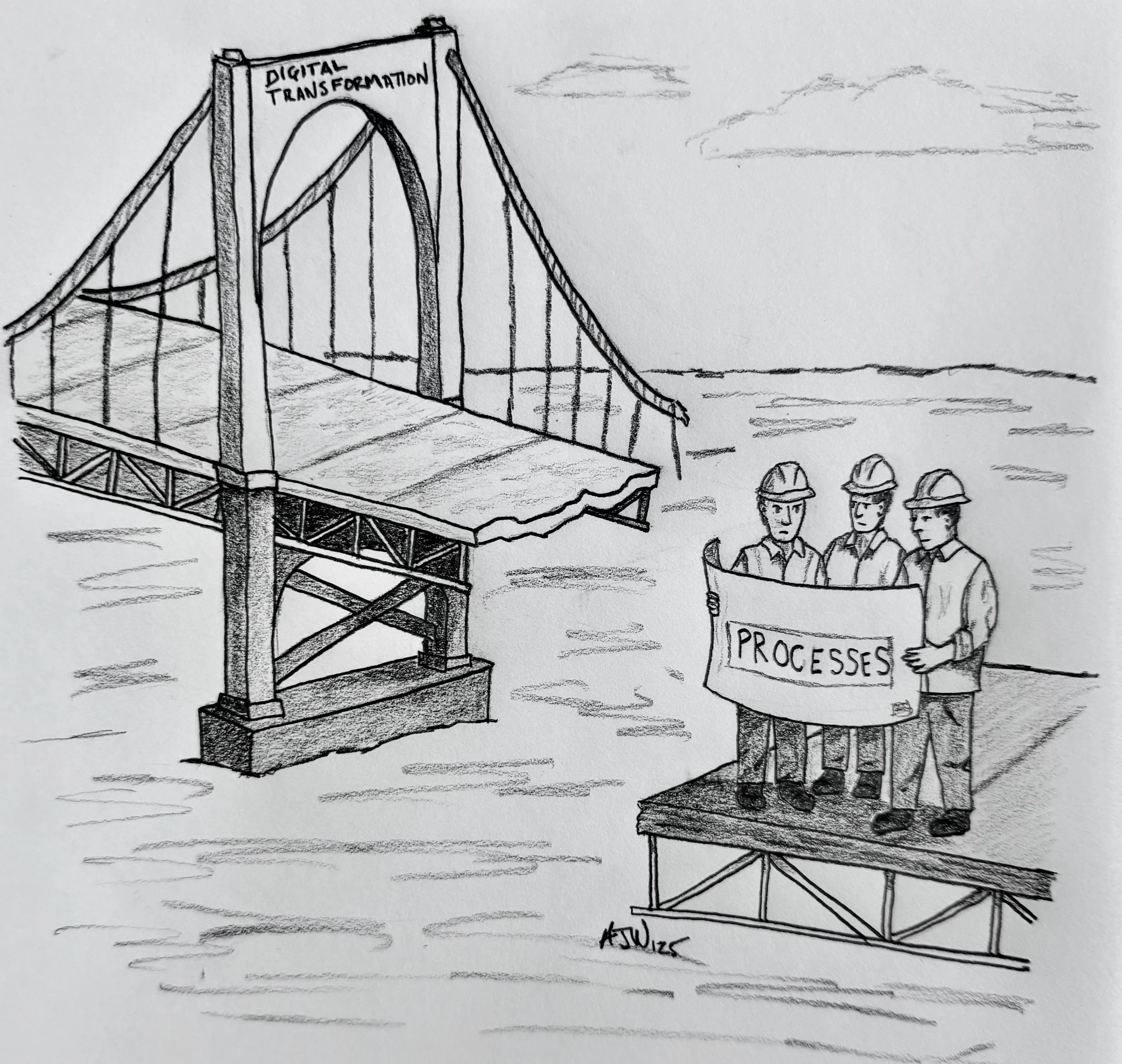The 80/20 Lie: How Construction Tech Fooled Us All (Even Me)
For years, I’ve repeated one of construction tech’s most accepted truths:
“Out-of-the-box platforms get you 80% of what you need.”
Turns out…that 80% rule was a lie.
Not a malicious one. In fact, five years ago it might have been truth. But today, it feels much more like a myth. A myth that we all secretly still want to believe. So much so that vendors continue to sell it. Executives continue to quote it.
Heck, I even continue to write it. Or at least I did. That is, until a week or so ago, when I got called out on it.
So, naturally, I went digging. Sure enough, the data, the stories and the frustration in the field all point to a much harsher reality. Out-of-the-box platforms aren’t getting us 80% of the way there anymore. If we’re really being honest, they’re lucky to get us 60%.
And even that’s probably generous.
How the 80/20 Lie Took Hold
As I mentioned, five to ten years ago that 80% sounded great. Construction was buried under point solutions, emails and Excel sheets. When the big “all-in-one platforms” like Procore, Autodesk and InEight promised to consolidate everything, it felt like a revolution (that I excitedly joined).
Finally, one place for all our data.
Finally, one source of truth.
Finally, a way to stop duct-taping our digital projects together.
Except…that’s not what happened.
According to multiple industry surveys, more than 70% of construction companies struggle to implement new technology (McKinsey), and 60% say adoption is difficult (AGC). On top of all that, JBKnowledge has been reporting for years that North American contractors are paying for tools they don’t fully use.
So even before you log in, the numbers are stacked against success.
We told ourselves the 80/20 rule was fine and that “close enough” was good enough. But the proof is in the pudding. We’re not close enough to success. In fact we’re no where near it.
And the platforms we thought would save us baked the reasons right into their code.
Hiding in Plain Sight
So how did we get here? What is it about the platform that led us to believe this lie?
Believe it or not, the secret was hiding right under our noses. That’s right, these platforms were built on three things us construction teams know all too well: rigidity, resistance and time.
Rigidity: One-Size-Fits-Nobody
Here’s the dirty secret about “out-of-the-box”: it’s actually “in-the-box.” These platforms were designed for the “average” user.
But construction doesn’t have average users.
A regional GC, a specialty sub and an owner-led capital program all have wildly different needs. Yet they’re forced to work inside the same preset framework.
So, what happens?
Teams start bending their workflows to match the software instead of configuring the software to match their workflow.
That’s how innovation dies. Not in some dramatic crash, but in a thousand quiet compromises.
Resistance: The Human Factor
Even when the system works, people don’t.
Executives love the dashboards. Field teams hate the extra clicks.
Why? Because we try to install innovation instead of enabling it. We push change from the top down, hand out logins, and call it transformation. Then we wonder why no one uses the software.
It’s not that people don’t want to innovate. It’s that the process was never built for them in the first place.
And when your users don’t feel heard, your rollout isn’t a success story. It’s a countdown to mutiny.
Time: The Never-Ending Implementation
Remember when these platforms were supposed to save time? Now, they consume it.
A typical enterprise implementation takes 12 months or longer, and 45% go over budget. That’s an entire year of consultants, training sessions and “just a few more weeks until go-live.”
By the time you finally launch, the project team that started it is already on something else. ROI? Still pending.
We’ve turned the promise of agility into a marathon of configuration and patience, which are two things construction rarely has in abundance.
And you can always tell when a platform has failed by one simple sign: the faint sight of a side Excel spreadsheet on the second monitor.
Those “temporary workarounds” become permanent side systems real quick and the project data you were supposed to centralize ends up fragmented again. One sheet for RFIs, one for submittals, one for change orders.
And that beautiful new system? It turns into a glorified file cabinet. Field teams complain that it’s clunky. Project managers say reports take too long. Executives stop trusting the dashboards because they know half the data lives somewhere else.
We bought the promise of connection and ended up managing disconnection in more expensive ways as the very tools meant to unite our teams became digital silos of their own.
That’s not transformation. That’s a trap.
How We Rebuild Trust in Tech
Here’s the good news: this story doesn’t end with blame. It ends with building better.
Sure construction tech may have fooled us in the past, but it’s time we reclaim control. And I don’t mean by rejecting technology, but rather by demanding better alignment between our people and more from our platforms.
1. Start With Alignment
Even after all that’s been said, I still believe a failed digital transformation isn’t a solely a technology problem. It’s still heavily a leadership problem. Before you buy another system, ask one question:
“What problem are we actually trying to solve?”
If your teams can’t answer that, they won’t buy in. It doesn’t matter how sleek the software looks. Alignment means getting leadership, field users and stakeholders pulling in the same direction before implementation starts.
Because no platform can save a project that isn’t aligned.
2. Lead the Change, Don’t Delegate It
You can’t outsource culture. You can’t subcontract accountability. Leaders need to model adaptability, empower champions and reward progress (not just compliance).
Innovation isn’t a line item on a project budget. It’s a behavior. And change management shouldn’t be a PowerPoint slide at the end of the kickoff meeting.
These must be the heartbeat of the whole transformation, and the organization as well.
3. Reclaim Flexibility with a True Platform
Now let’s talk about the tech fix. The 80/20 lie only thrived in cases where flexibility was already limited.
But the rise of Platform as a Service (PaaS) changes everything.
PaaS gives you the stability of a proven foundation (security, integrations, connected data models) but lets you customize and extend it with low-code/no-code tools.
You’re not locked into someone else’s vision of project management, but rather you can build your own. So, whether we’re missing 40%, or more, you can finally close that gap your way.
It’s the hybrid model construction has been waiting for. A platform that adapts as fast as our projects do.
What the 80/20 Lie Taught Me
So yeah, I was wrong. But being wrong is part of progress.
I believed the 80/20 rule had a place in construction tech, and maybe you did too. But regardless of how much we wanted close to be enough, it’s just not.
Technology shouldn’t get us “most of the way there.”
It should get us where we actually need to go.
The future of construction tech isn’t simply out of the box software. It’s a culture built from the inside by leaders who align and teams who adapt coupled with platforms that empower them both.
What’s cool to me is, the story isn’t over. In fact, it’s just getting started. Let’s make a pact to stop settling for someone else’s definition of innovation and believing the lie that 80% is close enough.
Because in construction, the greatest thing we’ll ever build…is the way we build.
Construction is cool, tell your friends!

